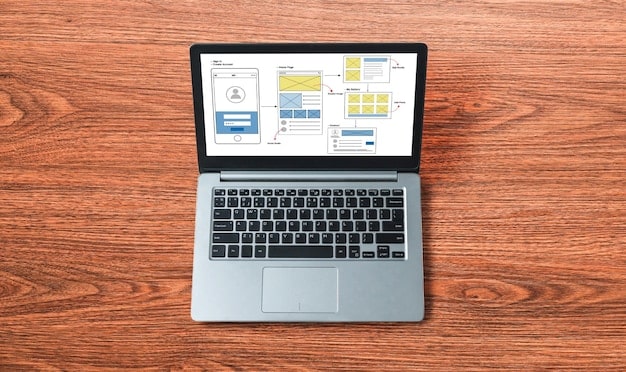Maximizing Impact: Technology for Community Action & Cost Reduction

Maximizing Your Impact: Using Technology to Streamline Operations and Reduce Costs in Your Community Action Project by 10% involves strategically leveraging digital tools to enhance efficiency, minimize expenses, and ultimately achieve a greater impact within the community.
Community action projects play a vital role in addressing local needs and fostering positive change. However, these initiatives often face challenges related to operational efficiency and budget constraints. Maximizing Your Impact: Using Technology to Streamline Operations and Reduce Costs in Your Community Action Project by 10% is not just a possibility, but a necessity to scale and sustain these initiatives.
This article explores practical technology-driven strategies that community action projects can implement to streamline operations, reduce costs, and enhance their overall impact. Embracing technology thoughtfully can lead to significant improvements in resource management and project outcomes. Are you ready to explore how technology can revolutionize your community action project?
Understanding the Need for Technological Integration in Community Projects
Community projects often operate with limited resources, making efficient operations crucial. Investing in technology can help overcome these limitations. By leveraging technology, community action projects can optimize workflows, improve communication, and achieve substantial cost savings.
How Technology Addresses Common Challenges
Many community projects struggle with inefficient communication, manual data entry, and redundant tasks. These are areas where technology can be transformative. Implementing digital solutions can automate processes, reduce errors, and free up valuable time for more strategic activities. For example, project management software can streamline task assignment and track progress, while cloud-based storage solutions can facilitate easy sharing of documents and resources.
Additionally, technological tools for fundraising and grant management are essential. Online donation platforms can simplify the donation process, while dedicated tools can help track grant applications and manage financial reporting.
- Improved Communication: Email, messaging apps, and project management platforms for seamless team collaboration.
- Automated Processes: Simplification of repetitive tasks to save time and reduce error.
- Data-Driven Decision-Making: Collection and analysis of data to make informed decisions to improve processes of operation.
- Cost Reduction: Reduction in operational costs through efficient resource allocation.
Integrating technology thoughtfully allows for better resource allocation. It can enable projects to reach more people, deliver services more effectively, and demonstrate their impact more convincingly to stakeholders and funders. Moreover, technology enhances transparency and accountability, key factors in maintaining trust and securing ongoing support.

Choosing the Right Technology Solutions
Selecting the right technology solutions is crucial for maximizing your impact: using technology to streamline operations and reduce costs in your community action project by 10%. It requires careful assessment of the project’s needs, budget, and technical capabilities. A phased approach to technology adoption can help community projects manage costs and minimize disruption. Begin by identifying the most pressing problems to address with technology. This targeted approach ensures that investments align with the project’s priorities.
Assessing Project Needs and Budget
Begin by conducting a thorough assessment of the project’s current operations. Identify bottlenecks, inefficiencies, and areas where technology could make a significant impact. This assessment should involve input from project staff, volunteers, and beneficiaries, offering a comprehensive view of the project’s strengths and weaknesses. From there, set realistic expectations from implementing new tools and technology.
Next, determine the budget available for technology investments. Consider the total cost of ownership, including software licenses, hardware purchases, training, and ongoing maintenance. Free and open-source software can be a viable option for projects with limited budgets. These tools often provide robust functionality at no upfront cost. Cloud-based solutions can reduce the need for expensive hardware infrastructure.
- Identify Key Needs: Focus on problems that technology can solve effectively.
- Set Realistic Budgets: Consider the total cost of ownership, not just the initial purchase price.
- Explore Free and Open-Source Options: Leverage resources like free website builders, software options and cloud based drives.
Selecting the appropriate tools requires balancing cost, functionality, and usability. Community projects should prioritize solutions that are easy to learn and simple to integrate into existing workflows. Training and support are essential to ensure that staff and volunteers can effectively use the technology.

Implementing Specific Technologies for Efficiency
Once you have a clear understanding of your project’s needs and budget, it’s time to explore specific technological solutions. These can range from simple productivity tools to more complex systems like CRM software. By strategically implementing these technologies, community action projects can optimize processes and achieve measurable savings. One essential aspect is to ensure that the chosen technologies can integrate with each other. This seamless integration can prevent data silos and ensure that project information is readily accessible across different platforms.
Enhancing Communication and Collaboration
Effective communication is the backbone of any successful project. Implement tools like Slack, Microsoft Teams, and Google Workspace to streamline team interactions. These platforms offer features like instant messaging, shared calendars, and document collaboration, reducing reliance on email and improving response times.
Project and Task Management
Utilize project management software like Asana, Trello, or monday.com to organize tasks, track progress, and assign responsibilities. These tools can automate workflows, send reminders, and generate reports, helping teams stay on schedule and within budget. For smaller projects, simple to-do list apps like Todoist or Microsoft To Do can be an effective solution.
- Customer Relationship Management (CRM) Software: Manages interactions and data of stakeholders.
- Cloud Storage Solutions: Facilitates document sharing and version control.
- Online Survey Tools: Gathers feedback from beneficiaries and stakeholders.
For financial management, tools like QuickBooks or Xero can streamline accounting processes, automate invoicing, and generate financial reports. Nonprofits can often access these tools at discounted rates. Similarly, fundraising platforms like Donorbox or GoFundMe can simplify online donations, track fundraising campaigns, and engage donors. Email marketing platforms can automate email campaigns, segment audiences, and track engagement, helping community projects nurture relationships and increase donations. These tools can also be used to announce upcoming events or ask for volunteers.
Impact Measurement and Data Analysis
Demonstrating impact is crucial for sustaining community projects. Technology enables rigorous data collection and analysis to measure and communicate outcomes. Community projects can use data to tell compelling stories and demonstrate the value of their work. This will improve the likelihood of obtaining funding and receiving local support. Tools like Google Analytics can track website traffic, user behavior, and conversion rates, providing deeper insights into the project’s online presence and effectiveness.
Collecting Relevant Data
Start by identifying key performance indicators (KPIs) that align with the project’s goals. This might include the number of people served, the hours of volunteer work contributed, or the funds raised. Collect data consistently using digital forms, surveys, or tracking tools. For example, use forms like Google Forms or SurveyMonkey to collect information on project participants’ demographics. This data can be used to demonstrate the project’s reach and impact on specific communities.
Analyzing and Reporting Outcomes
Analyze the collected data using spreadsheet software like Excel or Google Sheets. These tools enable simple calculations, charting, and statistical analysis. For more sophisticated analysis, consider using data visualization tools like Tableau or Power BI. These platforms can create interactive dashboards and reports that communicate complex data in a clear and compelling manner. Share results with stakeholders through online reports, presentations, or infographics.
- Data Analysis Tools: Excel, Google Sheets
- Data Visualization Software: Tableau, Power BI
- Reporting: Online Reports, Infographics
Utilizing these data-driven metrics will assist with maximizing your impact: using technology to streamline operations and reduce costs in your community action project by 10%. Make sure you utilize available data to adjust and adapt your operational policies.
Cybersecurity and Data Privacy
Protecting sensitive data is crucial. Implement robust cybersecurity measures to safeguard against threats and ensure compliance with privacy regulations. One way to do this is to utilize two-factor authentication, as this security measure adds an extra layer of identification requiring an automated and temporary passcode to be entered each time a log in attempt is made. Always stay up to date in respect to current fraudulent schemes and tactics to protect your organization from external attacks.
Implementing Security Measures
Invest in antivirus software, firewalls, and intrusion detection systems. Educate the team about common threats, such as phishing scams and malware, and provide training on how to identify and avoid them. Regularly back up data to secure locations, and establish a disaster recovery plan to minimize downtime in case of a security incident. Use strong, unique passwords for all accounts, and update them regularly.
Ensuring Data Privacy Compliance
Familiarize yourself with relevant data privacy regulations. Obtain consent before collecting personal information, and be transparent about how the data will be used. Implement security measures to protect against unauthorized access, disclosure, or loss. Regularly review and update your privacy policies to reflect changes in regulations or data practices.
- Data Protection Training: Conduct data protection training sessions for all members.
- Review Vendor Privacy Policies: Check the data processing agreements before selecting the tools to use.
By diligently addressing cybersecurity and data privacy, community projects can build trust with stakeholders, protect sensitive information, and avoid costly legal repercussions. This way community projects can focus on maximizing your impact: using technology to streamline operations and reduce costs in your community action project by 10%.
| Key Point | Brief Description |
|---|---|
| 🚀 Integrate Tech | Use technology to boost efficiency. |
| 💰 Cost Savings | Lower expenses by automating tasks. |
| 📊 Data Analysis | Measure impact to improve effectiveness. |
| 🔒 Secure Data | Protect sensitive information to maintain trust. |
Frequently Asked Questions (FAQ)
Technology can streamline operations by automating tasks, improving communication, and facilitating data analysis, leading to optimized workflows and better resource allocation, thus reducing costs.
Free solutions include Google Workspace for collaboration, Trello for project management, and Mailchimp for email marketing. Affordable options often involve subscription-based services tailored to nonprofits.
By collecting and analyzing relevant data using tools like Google Analytics and conducting surveys, projects can track key performance indicators (KPIs) and demonstrate measurable outcomes.
They include implementing strong passwords, using two-factor authentication, regularly updating software, training staff on phishing awareness, and backing up data to secure locations.
Start with a clear assessment of current workflows, select a simple need such as task management, involve all users in the training process, and create clear goals.
Conclusion
Integrating technology into community action projects offers tremendous potential for increased efficiency, cost reduction, and enhanced impact. By carefully selecting technology solutions, implementing them strategically, and continuously measuring outcomes, community efforts can create sustainable change. Maximizing Your Impact: Using Technology to Streamline Operations and Reduce Costs in Your Community Action Project by 10% is an ongoing process that requires commitment.





